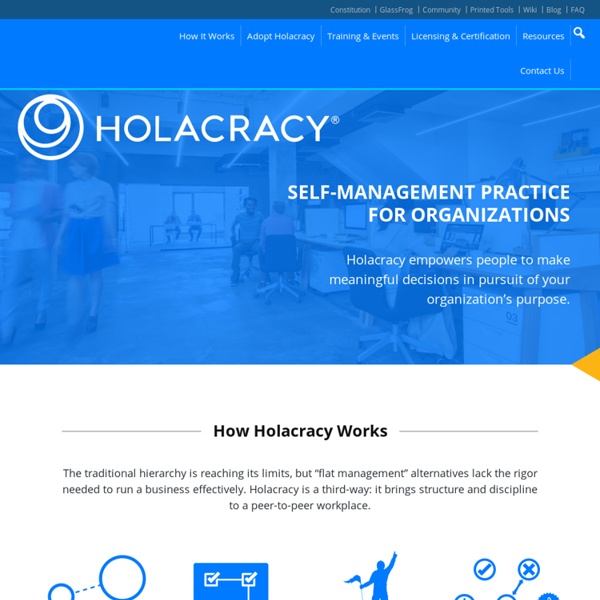



IGI Partners - L'Excellence en Holacracy iGi Partners importe l’Holacracy des Etats-Unis pour une diffusion en France et en Europe (français et anglais). Elle est une des 3 sociétés au monde à pouvoir délivrer des services en Holacracy. Elle met les talents et les compétences de son équipe au service des organisations afin qu’elles bénéficient de cette nouvelle gouvernance, adaptée au XXIème siècle. La raison d’être d’iGi Partners est « L’Excellence en Holacracy » : pour offrir des formations, accompagnements et coaching à la pointe de cette technologie managériale, IGI Partners se perfectionne continuellement, notamment par la pratique de l’Holacracy au sein de sa structure. A cette question, iGi Partners apporte une réponse novatrice : l’architecture des entreprises doit évoluer par la mise en place d’un mode de gouvernance contemporain permettant de développer les aptitudes nécessaires aux enjeux actuels: agilité, résilience, transparence, intelligence collective et leadership distribué.
Blueprint of WE Collaboration Document Sociocracy 3.0 - Grow effective, resilient and agile organizations. The Policy Governance® Model [This article was originally published as "Le modèle Policy Governance et les organismes sans but lucratif" in the Canadian journal Gouvernance - revue internationale, Vol. 2, nos. 1, Winter 2001, pp. 30-48. Republication here is by permission of the original publisher.] Over the last decade or two, there has been increasing interest in the composition, conduct, and decision-making of nonprofit governing boards. The board-staff relationship has been at the center of the discussion, but trustee characteristics, board role in planning and evaluation, committee involvement, fiduciary responsibility, legal liability, and other topics have received their share of attention. Nonprofit boards are not alone, for spirited debate about the nature of business boards has been growing as well. Whatever the reasons for this intense interest in governance, the Policy Governance model for board leadership, created by the senior author, is frequently a primary focus of debate. What is there to control?
Holacracy-Constitution-4.1-FRENCH/Constitution-Holacracy.md at master · holacracyone/Holacracy-Constitution-4.1-FRENCH